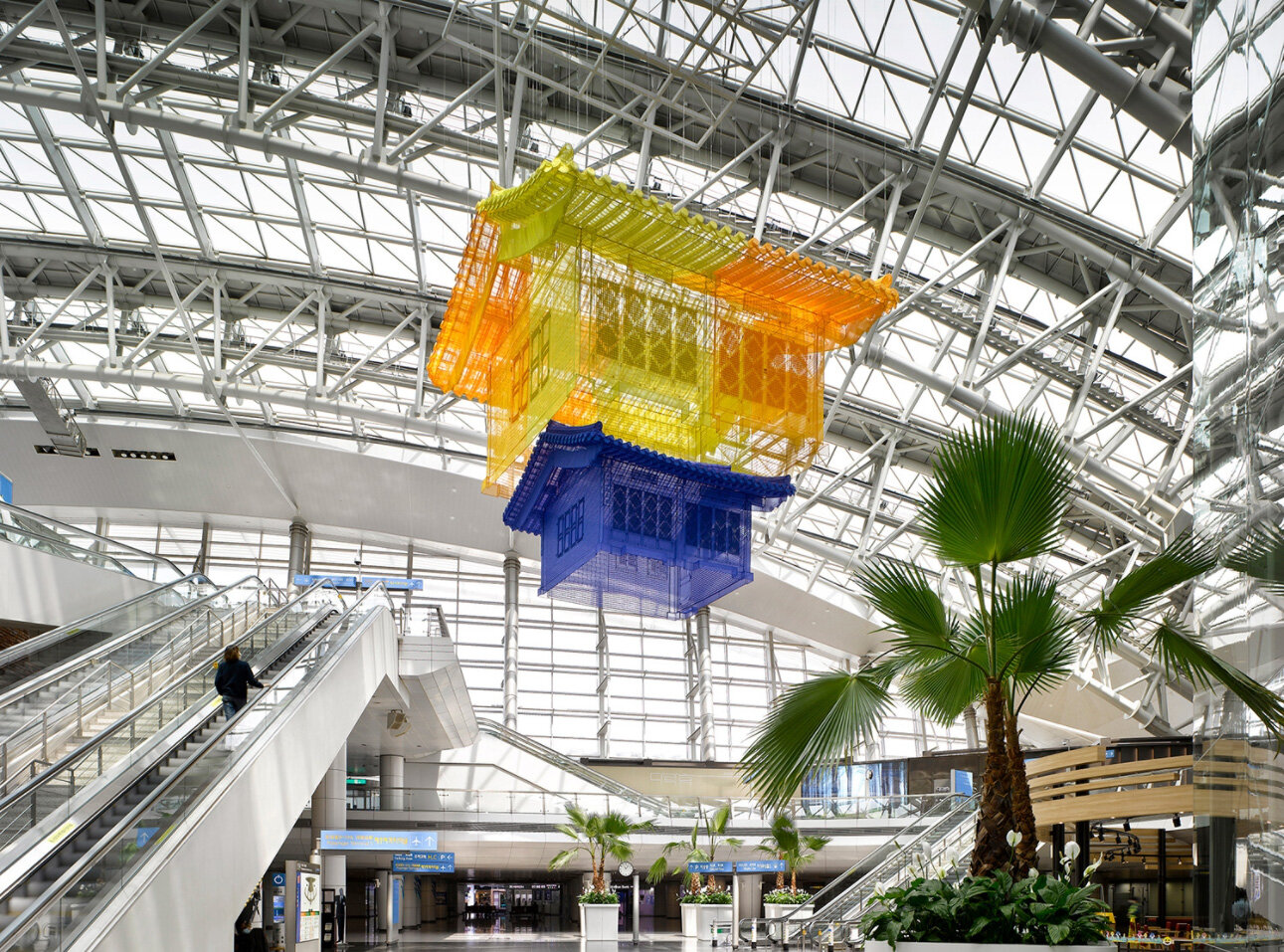Do Ho Suh, 'Home within Home,' 2019
Sacred Spaces In Public Places
written by Marcus Masaki
In my childhood I attended a church. I would sneak away to be in the stairwell, a tall rectangular room with carpeted blue floors. I would sit on the steps, knees to my chest, and listen intently to the muffled voices of the churchgoers next door. It was solitude, but more importantly it was a way to observe without being observed in return. Had the room been made of translucent fabric and wiry threads, that wouldn’t have been possible. In that sense Seoul-born artist Do Ho Suh’s work confronts you with the knowingness and willingness to be perceived. The structures consent to be looked at, but they look at you too.
Suh works to document a personal mythology built on the framework of memory and domestic spaces. He constructs life-sized immersive installations composed of colorful polyester fabric to replicate physical spaces that are of personal emotional significance. These projects are tangible, anatomical constructions built on invisible yet familiar experiences. The precision and attention to detail in Suh’s works are akin to 3D architectural blueprints displayed before the viewer. Its timelessness and fortification of safety and security wherever you go is evident as visual line weight is reinforced by the varied thicknesses of the seams throughout the structures. The fine texture of the fabric is tightly stitched together in grids. When stepping back, the texture nearly vanishes and viewers are left with the presence of smooth translucent structures. The installations retain their sharp angles and imposed rigidity, yet they reconcile with the natural gravity of fabric, susceptible to ripples and curling.
It makes it so real. The constructions of fabric projected in front of the audience mimics a room or home one could easily step into, yet remains delicate in material. The gossamer buildings become monuments to nostalgia. It begs the question if the memories that they allude to are as prone to tearing as the artwork itself.
In an attempt to domesticate the memory, Suh crystalizes the points in time in which the space existed, exists in the present, and will exist in the future. His personal history becomes a shared public experience, inviting guests into the not-quite-solid abodes lingering in his mind. The relationship between time and place is inherently woven with each careful stitch. In terms of forming complicated attachments to physical interiors/exteriors, it relates to memorializing and honoring a singular space through stillness. However, in a more intuitive sense, it relates to the philosophy of time not being linear. When you think of a happy or sad memory, your brain remembers the physical feeling of that time. There’s this sense of transporting backwards and surpassing the mental barrier of ‘today’ and ‘this morning.’ You always go back.
Though most of us just glance back, Do-Ho Suh turns around and holds a steady gaze into the past. Carefully documenting and measuring the physical spaces he wishes to contain--it’s a very meditative practice. And it’s one fueled by a lot of love and appreciation. Art is something that can require patience, and it’s a practice that fewer people would do if they didn’t genuinely love the process and outcome. It’s clear that he loves and wants to honor the spaces that he’s been in. In the process, he becomes a part of it. It’s an act of loving the self through the other.
It’s surgical and it’s loved. It’s dissected and sewn together and complete, if you ignore the emptiness.
Marcus Masaki Rodriguez was Torrance Art Museum's Getty Marrow Undergraduate Intern for Summer 2021. He wrote this article as a part of his internship experience.








